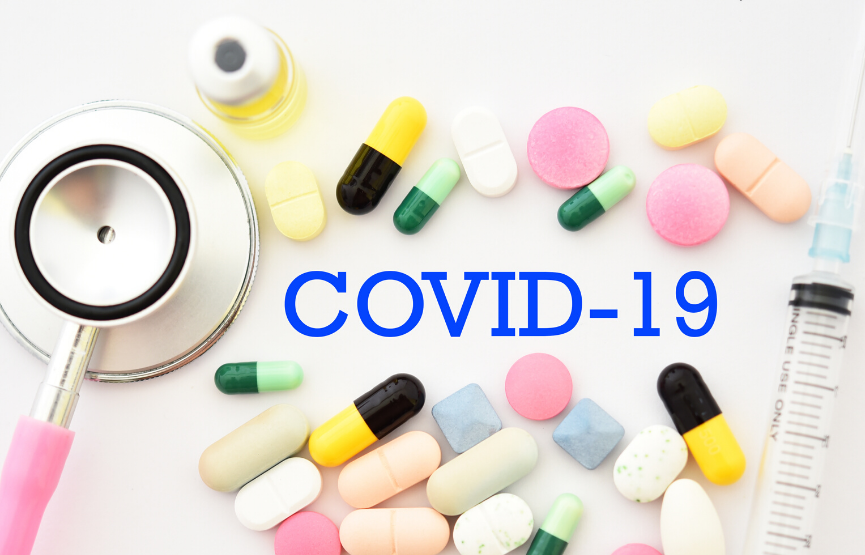COVID-19 from the molecular side

Severe acute respiratory syndrome coronavirus2 (SARS-CoV-2) or Coronavirus infectious disease (COVID-19) is an infectious disease of primarily the human respiratory tract caused by the novel corona virus. The virus is believed to be of zoonotic origin and it can easily be transmissible between humans via airborne droplets. Through mathematical models the virus yields a basic reproduction number (R0) of approximately 2 to 2.5 [1]. The incubation time of the virus is between 1 and 14 days, the hospitalization rate is 19% and the fatality rate is 1% to 3.4%. More recent studies conclude that the true R0 value is closer to 7 [2].
SARS-CoV-2 has a diameter of 50 to 200nm and it is a positive sense single stranded RNA (+ssRNA) which means it can be immediately translated after entry into the host cell as it is similar to messenger RNA (mRNA) [3]. Furthermore the RNA material of the virus is comprised of approximately 30,000 base pairs [4][5]. On the virion surface, there exists a glycoprotein also called spike, this is responsible recognizing and then binding specific cell receptors of the human cells. Specifically it has been shown that SARS-CoV-2 spike exploits the host Angiotensin-converting enzyme 2 receptor (ACE2) [6][7]. ACE2 exists in high numbers on membranes of lung cells. When the spike links with ACE2 receptor, a transmembrane enzyme called TMPRSS2 on the host cell will primer or activate the spike which means it will cleave the spike and lead to the insertion of viral +ssRNA into the host cell. ACE2 has the function of counter balancing ACE. ACE cleaves angiontensin-1 into angiotensin-2 leading to higher blood pressure. ACE2 counter balances the increased blood pressure by hydrolysing angiotensin-2 into vasodilating angiotensin1-7 therefore decreasing blood pressure.
Generally the two most promising paths of stopping infection would be to attack the host by inhibiting TMPRSS2 to prevent entry of viral RNA into the cell or by attacking the virus itself by blocking the spike glycoproteins. The first path would be more dangerous since it is essentially blocking a physiological protease which could lead to other health issues which are yet not known. Camostat mesylate and nafamostat mesylate are two drugs that show promise in actually blocking TMPRSS2 function and reducing viral transmission [8]. Furthermore, algae derived protein Griffithsin has been shown in the past to block spike proteins of the first SARS virus and is currently undergoing research to show if it can do the same on the current virus.
Currently, there are over 200 repurposed drugs which are being used in clinical trials on Covid-19 patients [9]. Antimalarial drugs such as chloroquine work by increasing pH of endosomes therefore the entry of the virus is impeded as normally this process requires a low pH to be successful for the virus. Antiviral favipravir clinical trials have shown promising results on COVID-19 patients, favipravir works by inhibiting viral replication thus allowing the host immune system to be able to neutralize the virus [10]. Negative side effects of these antiviral and antimalarial drugs have also displayed that they can increase toxicity of the heart [11].
To conclude all methods will have drawbacks and some will work better than others. Moreover research for vaccines will take a long time due to formulating and then getting approval and manufacturing are all time heavy procedures. In the meantime the world population must social distance to prevent transmission of the disease and the stress on the health systems.
References
- Belluz, Questions about Covid-19. https://www.vox.com/2020/1/31/21113178/what-is-coronavirus-symptoms-travel-china-map [accessed 15/04/2020]
- Sanche, Y.T . Lin, High Contagiousness and Rapid Spread of Severe Acute Respiratory Syndrome Coronavirus 2. https://wwwnc.cdc.gov/eid/article/26/7/20-0282_article [accessed 15/04/2020]
- Letko, A. Marzi, V. Munster, Functional assessment of cell entry and receptor usage for SARS-Cov-2 and other lineage B betacoronaviruses. https://www.nature.com/articles/s41564-020-0688-y [accessed 15/04/2020]
- Nanshan, et al., Epidemiological and clinical characteristics of 99 cases of 2019 novel coronavirus pneumonia in Wuhan, China. https://www.thelancet.com/journals/lancet/article/PIIS0140-6736(20)30211-7/fulltext [accessed 15/04/2020]
- Canrong, et al., Analysis of therapeutic targets for SARS-CoV-2 and discovery of potential drugs by computational methods. https://www.ncbi.nlm.nih.gov/pmc/articles/PMC7102550/ [accessed 15/04/2020]
- Hoffmann, et al., SARS-CoV-2 Cell entry depends on ACE2 and TMPRSS2 and is blocked by a clinically proven protease inhibitor. https://www.cell.com/cell/pdf/S0092-8674(20)30229-4.pdf [accessed 15/04/2020]
- Kupferschmidt, These drugs don’t target coronavirus, they target us. https://www.sciencemag.org/news/2020/04/these-drugs-don-t-target-coronavirus-they-target-us [accessed 16/04/2020]
- Fisher, D. Heymann, The novel coronavirus outbreak causing COVID-19. https://bmcmedicine.biomedcentral.com/articles/10.1186/s12916-020-01533-w [accessed 16/04/2020]
- Institute of medical science, University of Tokyo, Nafamostat is expected to prevent the transmission of COVID-19. https://www.eurekalert.org/pub_releases/2020-03/tiom-nie032420.php [accessed 17/04/2020]
- Sanders, et al., Pharmacologic treatments for COVID-19. https://jamanetwork.com/journals/jama/fullarticle/2764727 [accessed 17/04/2020]
- Akhmerov, E. Marban, COVID-19 and the Heart. https://www.ahajournals.org/doi/pdf/10.1161/CIRCRESAHA.120.317055 [accessed 17/04/2020]
